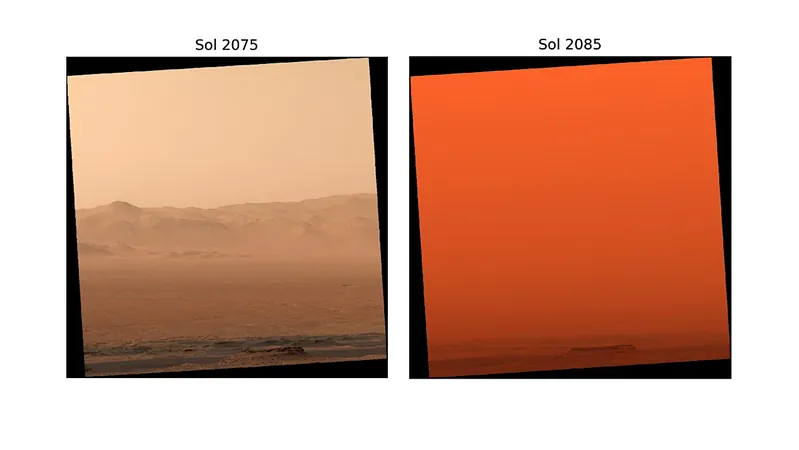
Surviving the Martian Landscape: The Hidden Dangers of Dust in Future Human Exploration
2025-03-20
Author: Arjun
Introduction
As humanity prepares for its bold leap into the cosmos, particularly with ambitious missions aimed at colonizing Mars, we face an array of technological and scientific hurdles that challenge our ingenuity. Among these challenges are health risks posed by the Martian environment, specifically the dust that coats the planet's surface.
Health Risks of Martian Dust
Research from the National Aeronautics and Space Administration (NASA) and other scientific bodies highlights the alarming potential of Martian dust to cause severe health issues for astronauts. Historical data from the Apollo missions, during which astronauts encountered significant respiratory problems due to Moon dust, emphasizes the urgency of understanding how extraterrestrial dust could affect human health.
The Composition of Martian Dust
Martian dust is uniquely hazardous due to its fine grain size, which allows it to easily irritate the lungs, penetrate the bloodstream, and potentially lead to chronic diseases. The composition of this dust includes perilous elements such as perchlorates, silica, and nanophase iron oxides, alongside trace amounts of toxic metals like chromium and arsenic. Given that some of these components are carcinogenic, the implications of exposure to Martian dust could range from mild symptoms to severe, life-threatening conditions.
Long-Duration Missions and Health Risks
One of the greatest concerns for future Martian explorers is the long-duration nature of their missions. As astronauts venture further into space, the time it takes to return to Earth grows longer, complicating emergency medical responses to dust-related health issues. This extended exposure significantly increases the risk of chronic health conditions, making it crucial for space agencies to prioritize dust exposure mitigation strategies.
Preventive Measures and Medical Preparedness
Astronauts may require preventive supplements to counteract the adverse effects of dust exposure. Furthermore, meticulously planned treatment protocols and medical equipment must be included in mission supplies to address any unforeseen health crises.
Conclusion
The findings and recommendations for safeguarding astronauts against the risks associated with Martian dust have gathered attention in recent studies published in the field of geohealth. Ensuring the safety of our explorers on the red planet not only pushes the boundaries of science but also heralds a new era of medical advances that could benefit humanity as a whole. Stay tuned as we unravel more about the challenges and solutions faced in the quest to send humans to Mars, and discover how these missions could shape the future of medicine and technology back on Earth!




 Brasil (PT)
Brasil (PT)
 Canada (EN)
Canada (EN)
 Chile (ES)
Chile (ES)
 Česko (CS)
Česko (CS)
 대한민국 (KO)
대한민국 (KO)
 España (ES)
España (ES)
 France (FR)
France (FR)
 Hong Kong (EN)
Hong Kong (EN)
 Italia (IT)
Italia (IT)
 日本 (JA)
日本 (JA)
 Magyarország (HU)
Magyarország (HU)
 Norge (NO)
Norge (NO)
 Polska (PL)
Polska (PL)
 Schweiz (DE)
Schweiz (DE)
 Singapore (EN)
Singapore (EN)
 Sverige (SV)
Sverige (SV)
 Suomi (FI)
Suomi (FI)
 Türkiye (TR)
Türkiye (TR)
 الإمارات العربية المتحدة (AR)
الإمارات العربية المتحدة (AR)